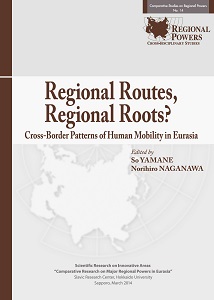The Geography, Economy and Society of Indian Diasporas
The Geography, Economy and Society of Indian Diasporas
Author(s): Stephen F. Dale
Subject(s): National Economy, Historical Geography, Cultural Anthropology / Ethnology, Socio-Economic Research
Published by: Hokkaido Slavic-Eurasian Reserarch Center
Summary/Abstract: China and India represent interesting and contrasting economic and cultural centers that generated merchant diasporas from among their indigenous populations, but these countries or regions also had very different histories due to fundamental political differences between these two regions.
Here the focus will be on India, but with the Chinese experience constantly in the background. The most obvious factors driving the spread of Indian mercantile diasporas were: the enormous reservoir of fertile agricultural land, the early growth of major urban centers and the consequent social division of labor and the production of valuable agrarian and manufactured products to serve a large and diverse population. In addition, as with China, the regions on India’s sea and land frontiers remained less economically developed and socially differentiated throughout most of India’s recorded history. These territories include Southeast Asia, more usefully known here as Indo-China, Central Asia, including the western region known as Mawarannahr or Transoxiana and the eastern zone, including the Mongolian steppe and the region previously designated as Moghulistan or Chinese Turkistan and now as the Xinjiang region of China and finally parts of West Asia, most particularly, Afghanistan and Iran.
Book: Regional Routes, Regional Roots? Cross-Border. Patterns of Human Mobility in Eurasia
- Page Range: 1-12
- Page Count: 12
- Publication Year: 2017
- Language: English
- Content File-PDF

